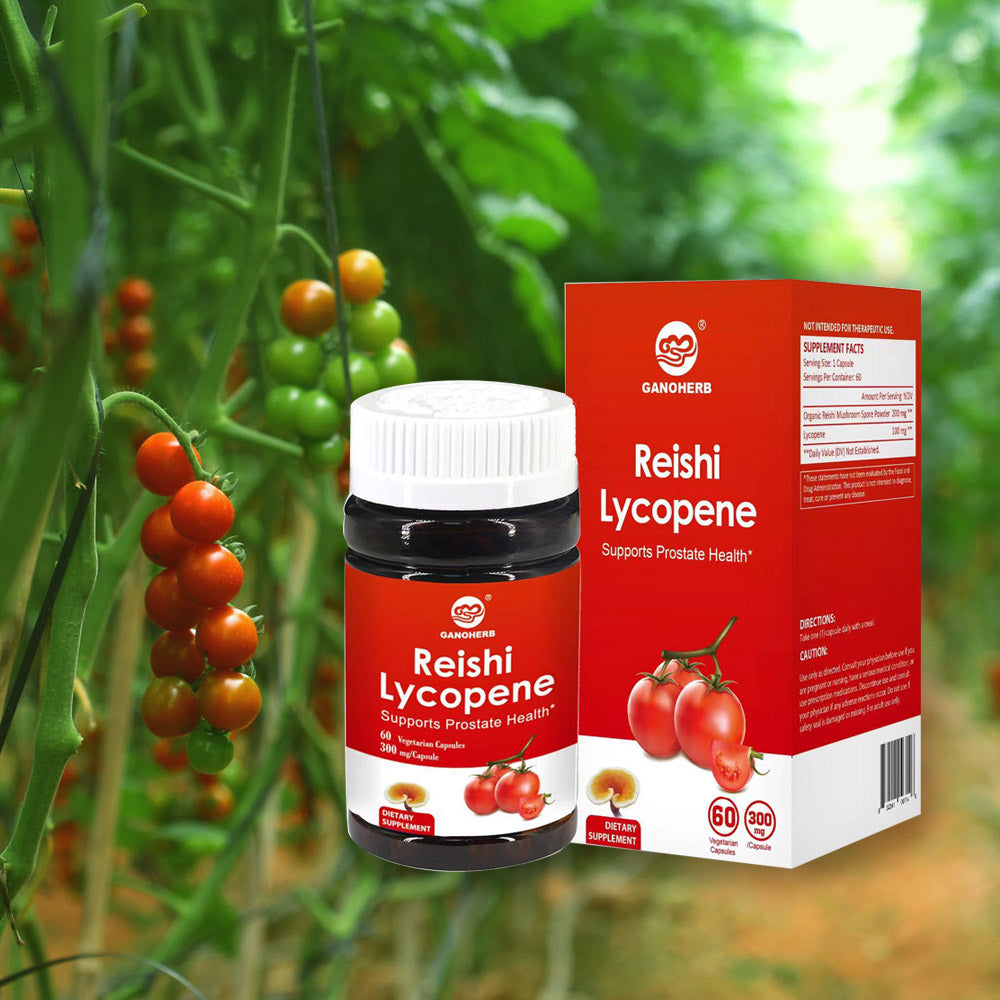What is Red Reishi Mushroom Tea? Exploring the Legendary Brew
Red Reishi Mushroom Tea, known scientifically as Ganoderma lucidum and revered in Asian traditions for centuries, is far more than a simple beverage. It represents a fascinating intersection of nature, culture, and enduring ritual. This distinct infusion, crafted from the distinctive woody mushroom, offers a unique sensory experience and a deep historical narrative. Let's delve into the world of red reishi mushroom tea from multiple perspectives, exploring its origins, preparation, characteristics, and place in human culture.

1. The Red Reishi Mushroom: A Fungus Steeped in Lore
The story of red reishi mushroom tea begins with the mushroom itself. Ganoderma lucidum, the red reishi, is a polypore fungus characterized by its striking, varnished, reddish-brown cap, often kidney-shaped or fan-like, and its woody texture. Unlike many edible mushrooms prized for their taste, the reishi is far too tough and bitter for culinary use in its raw form. Instead, its value lies in its transformation through preparation, primarily into tea or powder.
Found growing on decaying hardwood trees like oak or maple, particularly in humid, mountainous regions of Asia, the wild red reishi is relatively rare. This scarcity, combined with its unique, almost lacquered appearance, contributed significantly to its early mystique. Ancient texts and artwork from China, Japan, and Korea frequently depict the red reishi, associating it with auspiciousness, spiritual potency, and nobility. It earned poetic names like the Mushroom of Immortality (reflecting spiritual aspirations, not literal claims) and the Ten-Thousand-Year Mushroom, cementing its place as a symbol of the extraordinary within the natural world. Understanding this deep cultural reverence is key to appreciating why red reishi mushroom tea became such an enduring tradition.
2. Traditional Preparation: Unlocking the Essence
Transforming the incredibly tough, woody red reishi mushroom into a consumable tea requires patience and specific techniques, honed over generations. Traditional preparation of red reishi mushroom tea is a slow, deliberate process.
Typically, dried slices of the mushroom's fruiting body (the visible cap and stem structure) are used. These hard slices cannot simply be steeped like common tea leaves. Instead, they require prolonged simmering or decoction. The traditional method involves:
Slicing: The dried reishi is cut or broken into thin pieces or small chunks to increase the surface area exposed to water.
Simmering: The reishi pieces are added to cold water, brought to a gentle boil, and then simmered for an extended period – often ranging from 1 to 6 hours, sometimes even longer. This sustained heat is necessary to extract the soluble compounds from the dense fungal material.
Reduction (Optional): Sometimes the initial large volume of water is simmered down significantly, creating a more concentrated liquid.
Straining: After simmering, the liquid is strained to remove the solid mushroom pieces, resulting in a clear to slightly opaque broth – the red reishi mushroom tea.
Flavoring: Due to its inherent bitterness, the tea is traditionally often consumed plain as part of a ritual or practice, but it might also be combined with other herbs like licorice root, ginger, or jujube dates to make the taste more palatable.
This time-intensive process highlights the value placed on the resulting brew and the respect accorded to the mushroom itself.

3. Modern Forms and Brewing Methods
While traditional simmering remains a respected method, modern lifestyles and wider interest have spurred innovations in how red reishi mushroom tea is prepared and consumed. Accessibility has increased significantly:
Pre-Sliced/Chunked: Dried reishi readily available pre-sliced or in small chunks simplifies the first step for home brewers.
Powders: Finely ground red reishi powder is perhaps the most convenient modern form. It can be stirred directly into hot water (though it won't fully dissolve, requiring stirring or shaking) or added to other beverages. It significantly reduces brewing time compared to whole slices.
Tea Bags: Pre-portioned red reishi mushroom tea bags, containing either small chunks or powder, offer the ultimate convenience. They can be steeped in hot water for 10-20 minutes (less effective than simmering but practical), or even simmered themselves for a stronger brew.
Extracts & Liquid Concentrates: While not tea in the traditional sense, liquid extracts and concentrates derived from red reishi offer a potent form that can be diluted in hot water to create an instant tea-like beverage. These represent a highly processed, concentrated end of the spectrum.
Instant Teas: Soluble instant red reishi mushroom tea powders, often blended with other ingredients for flavor, dissolve completely in hot water for immediate consumption.
Modern brewing thus ranges from the dedicated, hours-long traditional simmer to the quick stir of an instant powder, making red reishi mushroom tea adaptable to various preferences and time constraints.
4. Sensory Profile: The Taste and Aroma of Earth and Wood
Experiencing red reishi mushroom tea is a unique journey for the senses, distinct from conventional teas or coffees. Its profile is an acquired taste for many:
Aroma: The dry mushroom slices or powder often emit a strong, earthy, woody, and slightly mushroomy scent. Some detect subtle notes reminiscent of leather or dried leaves. When brewed, the aroma becomes warmer and more pronounced, filling the room with a distinct forest-floor earthiness.
Flavor: This is where red reishi mushroom tea truly distinguishes itself. It is characterized by a profound, dominant bitterness. This isn't a fleeting bitterness but a deep, lingering, almost medicinal quality. Underlying this primary note are distinct earthy, woody, and umami (savory) flavors. The taste is often described as grounding or root-like. There is very little, if any, natural sweetness.
Mouthfeel: Depending on the preparation, the mouthfeel can vary. A clear decoction from simmered slices tends to be relatively thin and clean. Brews made from powder will have a slightly thicker, sometimes almost silty texture due to the insoluble particles. Concentrates can feel thicker and more coating.
Aftertaste: The bitterness and earthy notes linger significantly on the palate long after sipping. This persistent aftertaste is a hallmark of the brew.
The challenging flavor profile is why red reishi mushroom tea is often consumed for reasons beyond mere refreshment, tied deeply to its traditional context and personal ritual. Many modern producers blend it with other herbs or offer flavored versions to make it more approachable.
5. Cultural Significance and Ritual: Beyond the Beverage
Understanding red reishi mushroom tea is incomplete without acknowledging its profound cultural and symbolic weight, particularly within East Asian traditions. Its consumption was rarely just about hydration or flavor:
Symbol of the Auspicious: The red reishi mushroom was a potent symbol of good fortune, longevity (in a spiritual or metaphorical sense), success, and divine power. Depictions adorned temples, palaces, and artwork. Drinking tea made from it was, symbolically, an act of connecting with these positive forces.
Scholar's Companion: Historically associated with scholars, nobility, and monks, red reishi mushroom tea was part of a refined lifestyle focused on cultivation of mind and spirit. Its preparation required patience and mindfulness, aligning with meditative or contemplative practices.
Ritualistic Practice: The act of preparing the tea – the careful selection of the mushroom, the hours-long simmering – was itself a ritual. This slow process demanded presence and intention, turning consumption into a deliberate act rather than a casual sip. The challenging taste further emphasized that this was no ordinary drink, but something requiring respect and fortitude.
Connection to Nature: Brewing and drinking red reishi mushroom tea represented a deep connection to the natural world and its perceived wisdom. The mushroom, growing mysteriously on ancient trees, was seen as a gift from the forest, embodying resilience and natural potency.
Modern Cultural Integration: While its traditional symbolic weight remains, modern consumption of red reishi mushroom tea also reflects broader trends in wellness culture, natural product exploration, and interest in traditional global practices. It bridges ancient reverence with contemporary curiosity.
Red reishi mushroom tea is far more complex than its simple name might imply. It is the liquid result of transforming one of nature's most visually striking and culturally significant fungi. From its origins as a rare find on ancient trees, steeped in symbolism and reverence, to its modern incarnations as powders and tea bags, the journey of red reishi mushroom tea reflects human ingenuity in utilizing natural resources. Its unique, intensely bitter and earthy sensory profile demands attention, separating it entirely from commonplace beverages. Ultimately, understanding red reishi mushroom tea means appreciating its rich cultural tapestry, the ritualistic patience of its traditional preparation, and the distinct, acquired taste experience it offers – a cup filled with history, symbolism, and the deep, resonant flavors of the forest itself. Whether simmered for hours or stirred quickly into a mug, it remains a beverage that invites contemplation.











